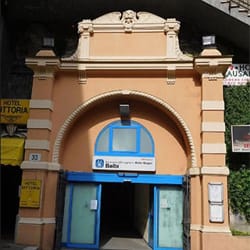
You can get to Curitiba from São Paulo by plane in about 1 hour, but going by car is also enjoyable. To get there, you take National Route 116 (BR-116). At 4,542 km, this is the longest National Route in Brazil and connects Ceará state in the northeast to Rio Grande do Sul state at the southern end. About 60% of its traffic is trucks and it is said to be the National Route with the most accidents. The road between São Paulo and Curitiba has a lot of curves, but the entire length of the highway has been 4 lanes since December 2017 making it safer and quicker to travel along. My car navigation system says it takes 5 and a half hours to get to Curitiba, but when you include breaks along the way, it’s more like 6 hours.

Heading southwest from São Paulo lies Vale do Ribeira, the biggest banana producing region in Brazil, with banana trees growing next to the highway. You can see banana plantations on the hills in the distance.
Curitiba is 935 m above sea level, making it the highest city in Brazil, so the temperature is on average 4 degrees lower than São Paulo in winter, from June to August.
The population of Curitiba is about 1,870,000. It increased by 7% over the 12 years from 2010 to 2022.
The city took in a lot of European immigrants in the late 19th century, so, when you walk around the center of the city, you’ll find buildings that might make you wonder whether you are in Europe and not Brazil.

They keep the buildings and streets in central Curitiba clean, which is no wonder because the city launched its Green Exchange Program in 1990 to solve a 1980s garbage problem. Under the program, when you bring 4 kg of recyclables like plastic bottles to a collection site, you can exchange them for 1 kg of vegetables. The program resulted in a reduction in garbage with the residents taking it upon themselves to keep the streets clean. Curitiba City won a United Nations Environment Programme award in 1990 for this program.
Curitiba does not have a subway, but the city devised a plan to run buses more safely and quickly. They implemented a Bus Rapid Transit (BRT) system in 1974 and since 1990, they have implemented a system that allows passengers to change buses on the many lines with just one ticket. Hybrid and electric buses now serve the routes, and there are even bi-articulated buses some 28-meter long connecting the city center with the suburbs.


There are tube-shaped bus stops around the city with an employee stationed at the entrance on one end of the tube. You pay your fare in the tube instead of paying it after you get on the bus. This is to allow passengers to get on the bus more quickly and easily and cut down on lost time. The other end of the tube is the exit. The tube platforms are designed to be at the same level as the bus exits and entrances, to make getting on and off quicker and easier.

I found a tube-shaped florist shop in a square in the center of Curitiba. It looks as though the tube has become a proud symbol of the city.
Curitiba has solved a number of different problems through focused brainwork, which makes it a terrific city in my books. Next time I’d like to tell you about its sightseeing spots.






























































